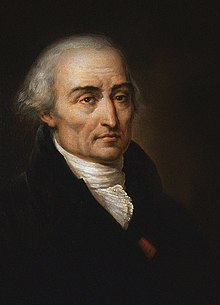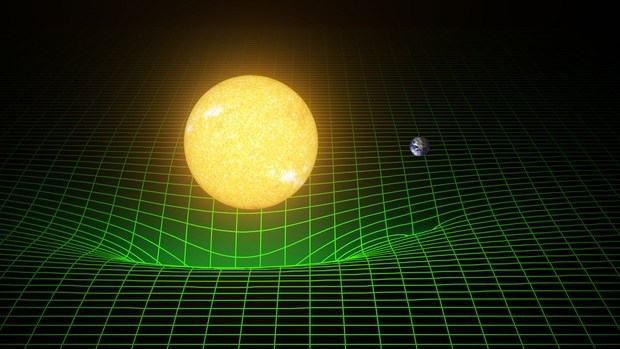
Space-time: physical reality's pervasive tapestry. This two part article shall vainly attempt to demystify that which is both pervasive, yet intangible. It encompasses everything, but is, itself, uncontainable. That has been the challenge confronting those inquiring into its nature, for it is not merely void, but something even deeper in character, even if not more readily observable.
Until its conclusion, yesterday's article pertained more to philosophical conjecture instead of scientific investigation. Debate as to its nature began in ancient Greece, with Zeno believing space to be nonexistent as material objects could not act onto it. Later, Aristotle advanced the more widely accepted theory that space defined itself according to the objects occupying it. It was regarded as being similar to a fluid conforming itself to whatever vessel contained it. Centuries later, Kepler, Galileo and Newton, the patriarchs of mathematical physics and astronomy, managed to determine the order of our solar system and the means by which the planets interact gravitationally. However, they had little to say about space-time, itself, apart from Newton, whose rigid, deterministic models merely affirmed that which was already assumed -that space and time existed separately and independently. Neither affected the other and both were immutable. Space and time were distinct

Although we often credit Albert Einstein (1871-1955) with space and time's unification, the fusion truly began two centuries earlier with Joseph-Louis LaGrange (1738-1813). In his book, The Theory of Analytic Functions (1797), he refers to the science of mechanics as involving four dimensional geometry: three spatial dimensions (width, breadth, and length) and the other of time (duration.) LaGrange reasoned that all mechanical and physical motion necessarily required the time dimension for any situation. A situation changed through time. Were time extracted from the system, change would be rendered impossible. With a few decades, Edgar Allan Poe -yes, the horror story author- mentioned space-time fusion in his remarkable essay entitled "Eureka!" (1848)* He regarded space and time as being 'as one,' about a half century before H.G. Wells' time traveling protagonist in the "Time Machine" posited the same notion when explaining the philosophy of his temporal transport craft.
While Poe and Wells' assertion is now deemed prescient, their models were more descriptive than analytical. It would be left to Albert Einstein in his two relativity theories to furnish the model with the quantitative basis, just as Isaac Newton's "Principia" conferred mathematical formalism onto what had hitherto been merely an intuitive sense of space and time's distinctness and immutability.
A BRIEF HISTORY OF LIGHT
Einstein did not merely conjure these theories out of nothing. It arose from what was, in the late 19th century, a paradigm shift in humanity's view of light and its propagation through space. Ever since Ole Roemer (1644-1710) performed the first measurement of light speed based on observations of Jupiter,** it was assumed that light moved at a finite speed. Until that time, no experiment was devised to ascertain light velocity. Having established that light moved at a specific speed, a question remained concerning its means of propagation. Did it travel as a particle or wave? (Spoiler: it turns out to be both, hence the advent of quantum physics.) Newton developed a corpuscular theory of light, citing the precise linearity of reflected beams -behavior that other waves do not exhibit in contrast with Christian Huygens (1629-1695) wave front theory. As Newton was the more eminent of the two, his theory became predominant for more than a century until light phenomena such as refraction was seen to be inexplicable were light beams composed of particles, not waves. When James Clerk Maxwell (1831-1879) published his famous equations in 1861 and 1862***, he demonstrated that light was an electromagnetic wave, which, for a while, demolished the particle-theory and made the wave model apparently unassailable.
As often happens in science, one solution spawns other problems. Principal amongst the problems the Maxwell equations precipitated was how light waves traveled. Once they determined that light traveled as a wave, it was wondered through which medium these waves propagated. All other wave phenomena, such as ocean and sound waves,require a medium. Ocean waves need water just as sound waves need material, preferably gases. Presumably, light required a material which permitted its conveyance: a hypothetical substance dubbed the "aether," after the air that the Gods breathed on Olympus, as opposed to the befouled oxygen we unwashed mortals inhale.
In 1871, Albert Michelson and Edward Morley performed the now-famous
Michelson-Morley experiment by which they attempted to measure Earth's
motion through this aether, more properly known as the luminiferous
aether. Through arduous effort, they constructed an interferometer
capable of measuring how light beams directed perpendicularly would
shift as Earth revolved and rotated through this aether wind. By this time, humanity knew Earth's orbital speed, which, at the time
of the experiment, was measured to be i30 kilometers per second. As Earth revolved and
rotated, they would know how the light beam's wavelength, which was 600
nm**** for experiment, would experience shifting due to the wind the
mobile Earth generated. To their surprise, and chagrin, they detected
no displacement at all.

This 'failure,' and other lesser known experiments, led directly to Albert Einstein's formulation of the Special Theory of Relativity (1905), in which he determined that light speed was constant in all inertial reference frames. Or, to phrase it differently, one's measurement of light speed doesn't change if one is stationary or in motion. This theory might not seem staggering, until one realizes that one would measure a light beam's speed as being the same if one were standing on the ground or traveling in a spacecraft at 90% light speed! So, the only result is that time, itself, must change. Time dilates at higher speeds! For the very first time, time, itself, was seen as mutable. One's time frame changes merely by moving and as we occupy a Universe full of motion, "everyone has their own clock," as Einstein asserted. Newton's notion of time existing independently of space was shattered. Finally, through special relativity, space and time were truly united into Space-time.
In 1916, Einstein published the sequel: General Relativity. Here, the focus was not speed, but gravitation: the fundamental 'force' mediated between all massive objects. This action-at-a-distance force confounded Newton metaphysically. While he developed a working model to explain how gravity affected materials, he could not explain its nature. He included something of a disclaimer in his writings by acknowledging that such remote influence between bodies was irrational. Einstein provided a new means by which to explain gravitational attraction. He quite cleverly divorced gravity from matter and concluded it was a property of space-time, itself, not of objects. Any massive object distorts its local space-time geometry, much like a bowling ball would deform a taut rubber sheet. If one were to toss ball bearings across the sheet, those closest to the bowling ball would 'fall' into its indentation. Similarly, any proximate objects to the Sun, such as planets, would be inextricably bound to it gravitationally. Earth is lodged in the Sun's gravity well, just as we are trapped in Earth's.
Gravity is shown not only to distort space, but time as well. Gravitational time dilation causes clocks to run at different rates depending on the matter nearby. Clocks on the ground have been shown to run more slowly than those in airplanes, as the grounded clock is in a more powerful gravitational field. The timing mechanisms associated with the Global Positioning System satellites must take this gravitational time dilation into account. In theory, time will be faster for you even if you climb up a ladder, though the difference is practically negligible.
Relativity didn't destroy Newtonian determinism, which still works quite well in describing how boulders fall off cliffs and how spacecraft like the Pioneer probes can still move through outer space without the necessity of continued impulses. However, Einstein's relativity demonstrated that Newtonian physics was only valid in regions of weak gravity and low velocities. Make the gravitational fields too powerful or the speeds too high, and relativistic effects become increasingly more important.

By relativistic reckoning, Earth shouldn't just produce an indentation, but, instead, must create a spinning space-time vortex around itself as it rotates on its axis and revolves around the Sun. Of course, how can one ever attain supporting evidence? Amazingly, NASA's gravity probe B mission did exactly that in an experiment requiring many years of the most precise measurement possible. The Gravity B probe uses gyroscopes oriented toward a distant star. While in orbit around Earth, the probe's ultra-fine spherical gyroscopes***** maintained a constant orientation on the star. As Earth moved through space, the space-time experienced twists and distortions that caused the gyroscope to shift ever so slightly: a phenomenon called "geodetic precession." After many years, the Gravity Probe B yielded the results researchers expected: the gyroscope's precession resulted from Earth's space-time vortex.
More confirmation for General Relativity, which hardly requires it. We accept that space isn't rigid; time isn't a rigid progression, and that they are both woven together into the space-time grid that stretches to all corners of the Universe. As we commemorate the 50th anniversary of the Time Lords, we understand that perhaps such unconstrained travel to all space-time coordinates is unlikely. Then again, the more we learn about the cosmos, the more fantastic it becomes. Today's impossibility is tomorrow's commonplace. Maybe our descendants will puzzle out space-time deepest mysteries and in so doing, will believe that we in the 21st century had barely fathomed anything.
*We've encountered "Eureka" before in our astronomical wanderings, most notably during discussions about Olber's Paradox: the one that asked the deceptively simple question, "If the Universe is infinite and contains an infinite quantity of stars, why is the night sky dark?" Heinrich Olbers (1758-1840) posed this question as a challenge to the model that the Universe was of infinite age and extent. Were it so, then every single sight line would extend to a star, making the sky uniformly bright. In "Eureka," Poe suggested that the Universe's finiteness in space and duration was the only solution to this paradox, as astronomers now believe it to be.
**Ole Roemer first estimated light's speed by observing Jupiter's moon Io, one of the four Galilean satellites -Io, Europa, Ganymede and Callisto- that Galileo discovered in 1610. Roemer realized that eclipses of Io (called immersions) were slightly off predictions. He reasoned that this error resulted from light's finite travel time: the eclipse would happen sooner around opposition (when Earth and Jupiter were close together) and later when Earth was much farther from Jupiter. Though Roemer's first light speed estimate was 28% lower than the accepted value today, his work served to establish that light speed was not infinite.
***These four equations are considered some of the most beautiful ever written, for they conjoin what had been considered the disparate phenomena of electricity and magnetism, thereafter known by the married name 'electromagnetism
****nm = nanometers (one billionth of a meter) 600 nm is in the orange-red part of the visible light spectrum. (Wavelength is related directly to color.)
*****These gyroscopes are as close to perfectly spherical as possible. With an 1.5 inch diameter, they are within 40-60 atomic layers of perfect sphericity. Such precision is necessary, since any imbalance within the sphere would cause a precession larger than that General Relativistic effects would induce.